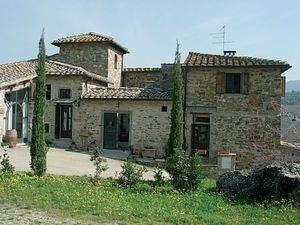For many parents January was a month of choices and tribulation as they tried to register their children for school next year. This obligation was for all students who in September 2006 are to start one of the four “cycles” of Italian school: nursery school (scuola materna); elementary school; middle school and high school (scuola superiore). Most parents faced a similar dilemma: what school to select and (in many cases) how to get their child in.
There has been much confusion and turmoil created by the new school reform which has been going into effect in stages over the past two years. Many parents do not have the foggiest idea of what the reform proposes nor of how it is changing (or will change) the institution of Italian education as they know it. Last month, while looking into where to enrol my oldest son for middle school next year, I decided it was time to try and decipher the new law for myself. Since this is such a formative period in a child’s life, both emotionally and academically, selecting the right school becomes crucial. By the end of middle school, the Italian system requires these youngsters to make the adult decision of choosing their higher education track – an arduous task for a 12 ½ year old.
Here in Italy you are not bound to your school district of residence. Unless a school fills all the sections with its resident pool, you can hope to put your child in any public school in your region. You don’t have to choose where to buy your home based on the reputation of the school around the corner nor do you necessarily have to associate school quality with the socio-economic characteristics of your neighborhood.
Today, there seems to be a shift toward including families in the decision about where their children will go to school. We found that all the schools – both public and private – had “open day.” At one school when I called and asked when they were having the “scuola aperta” the man actually seemed confused at first, until suddenly the light bulb went on and he said, “O, l’oppenddei!” But, the name factor aside, what it means is that parents can take a tour of the school, meet the preside (principal) and find out about the program and the policy that each institute adopts.
The other option that the new reform gives parents and students is the choice of additional hours that can be used to enrich the core curriculum (29 hours per week for middle school) by doing workshops, which each school offers based on its faculty and the facilities available. Schedule also changes depending on the school. There are schools that divide their hours among 6 days (which means Saturday morning school), some schools offer longer hours which are usually contingent to having cafeteria service, others fit all their offerings into a 5 day schedule where students get out of school at around 2 pm without having lunch. By law the schools have the choice of offering different schedules that can vary from a minimum of 29 hours per week to a maximum of 40 (including cafeteria time) – although personally I didn’t encounter anything above 35 hours.
Recent changes in the academic program of the middle school include: the addition of a second foreign language to the required core curriculum; the individual Portfolio where the student’s academic and behavioral record will be compiled (as of 2005 it is begun in the first grade and will be kept throughout the course of the first 8 years of school); a faculty evaluation of the student at the end of the second year will determine access to the third and final year, at the end of which there will be a new state exam for admission into one of the two “tracks” available for secondary school: the Liceo System or the System of Professional Formation. The middle schools will also provide guidance counselling to help students and their families make the decision regarding secondary education. There will be new standardized state exams given periodically to assure that schools are maintaining the national criteria for the required curriculum and to assess the overall quality and level of instruction of the individual schools.
After several days of uncertainty, because the school of our choice had a surplus of requests for the available non-resident openings, we found out that my son was accepted. The preside was able to decide her own criteria for granting admission to out of town students and she chose to use geographical proximity as her basis for selection. So luckily, being from the closest town outside her comune, we made the cut. Now all we have to do is wait until September to see if our choice was the right one!



